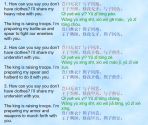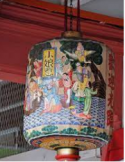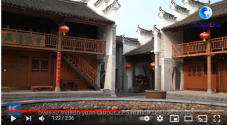Hendrik_2000
Lieutenant General
Here is brief story unfortunately Liang Shicheng was prosecuted during the cultural revolution because he recommend to preserve the old Beijing and suggest to built new city to house the government on the west side of the old Beijing. but the CCP following the Russian advisor instead and bulldoze the old Beijing leaving Beijing sterile . But that was the day when the old guard has no clue of heritage and only to eager to embrace modernity. Their life story is beautiful romance, dedication to the architecture and China, patriotic and modern. Exemplify the best tradition of scholar and gentlemen of the old. They strike a friendship with Douglas Fairbank
Many of China’s ancient architectural treasures crumbled to dust before Lin Huiyin and Liang Sicheng began documenting them in the 1930s. In China, ancient structures were usually treated like any other buildings rather than protected and studied, as they were in many Western countries. The husband and wife team were among the first preservationists to operate in China, and by far the best known. Their efforts have since inspired generations of people to speak out for architecture threatened by the rush toward development.
Becoming China’s premier architectural historians was no easy feat. The buildings they wanted to save were centuries old, often in a shambles and situated in remote parts of the country. In many cases they had to journey in treacherous conditions across the Chinese countryside to reach them.
Exploring China’s outlying areas during the 1930s meant traveling muddy roads by mule, rickshaw or on foot. This was a demanding undertaking for both Liang, who walked with a bad limp after a motorcycle accident as a young man, and Lin, who endured tuberculosis for years. Inns were often squalid and food could be tainted, and there was always a risk of violence by rebels, soldiers and bandits.
Their greatest discovery came on an expedition in 1937, when they dated and meticulously cataloged , or the Temple of Buddha’s Light, in Wutai County, Shanxi Province. This breathtaking wooden temple was built in 857 A.D., making it the oldest known building in China at the time. (It is now the fourth-oldest known).
Liang and Lin crawled into the temple’s most forbidding areas to determine the building’s age; one dusty aerie was inhabited by thousands of bats, many of them dead, and millions of bedbugs. Liang wrote of the experience in “: Partners in Exploring China’s Architectural Past,” an English-language story of their lives by Wilma Fairbank, a close friend and correspondent.
“In complete darkness and amid the vile odor, hardly breathing, with thick masks covering our noses and mouths, we measured, drew, and photographed with flashlights for several hours,” Liang wrote. “When at last we came out from under the eaves to take a breath of fresh air, we found hundreds of bedbugs in our knapsack. We ourselves had been badly bitten. Yet the importance and unexpectedness of our find made those the happiest hours of my years hunting for ancient architecture.”

Image
Lin was enthusiastic about studying architecture, but it was considered improper for young women to work late into the night, unsupervised, with young men, so Liang became the official architect.Credit...CPA Media/Picture Alliance
Though Lin and Liang devoted themselves to saving remnants of ancient China, their lives were entangled with modern Chinese history.
Liang was born on April 20, 1901, in Tokyo, where his father, Liang Qichao, a leading Chinese intellectual and reformist, was stationed. Lin was born in Hangzhou, China, on June 10, 1904. Children of prominent families, they both lived and studied abroad and grew up to be open-minded intellectuals when much of Chinese society was constrained by traditions.
Their families knew each other, and the two journeyed to the United States together to attend the University of Pennsylvania in 1924. Lin was eager to study architecture, but the university’s architecture school would not admit her because it was considered improper for young women to work late into the night, unsupervised, with young men.
When they graduated in 1927, Lin earned a bachelor of fine arts degree, having taken classes in architecture, and Liang became the architect, earning a bachelor’s and later a master’s degree in the field. But they always worked together.
“I think they saw each other as partners, not as business but as life partners,” Nancy S. Steinhardt, who has studied the couple’s work as a professor of East Asian art at the University of Pennsylvania, said in a telephone interview. “It’s not clear who did which parts of drawings or articles they wrote; they were a team.”
At first glance they made an incongruous couple. Lin was a glamorous, vivacious polymath who wrote poetry, fiction, criticism and drama and made her home into a kind of intellectual salon. Liang was a highly focused architect and teacher who could be taciturn. But their differences proved complementary.
Lin entertained several suitors as a young woman, including the poet , but married Liang in 1928, in Canada, where they had traveled after their graduation. After several months in Europe they returned to China, where Liang and Chinese colleagues from the University of Pennsylvania founded the architecture department at Northeastern University in Shenyang, the country’s second architecture program. His academic writings and lectures from the 1930s were eventually bound and released as “A History of Chinese Architecture,” a rare comprehensive book about the subject.
During the early 1930s, after moving to Beijing, the couple began making regular expeditions into the Chinese countryside to seek out surviving ancient wooden structures. Their explorations ended when Japan invaded China in 1937. In 1940, the Liang family, now with a young daughter and a son, moved to a cottage they built in a village near Kunming, in southern China. Lin’s tuberculosis got worse, and the straitened circumstances of wartime made life all but intolerable.
During the war they used their copious notes, photographs and drawings to continue writing about architecture. When the war ended, Liang became a visiting professor at Yale and China’s representative to the committee that designed the United Nations building in Manhattan in 1949. Lin, burdened by caring for her family, remained in China.
After the Communist takeover in 1949, Liang and Lin were excoriated as bourgeois intellectuals, becoming fodder for Communists trying to display party loyalty. Lin did not have to endure the mistreatment for long: She died of tuberculosis on April 1, 1955, at 51.
But Liang, who had returned to China to care for her, was accused of being a counterrevolutionary, publicly shamed and forced to undergo “re-education.” He was powerless to stop the demolition of the ancient walls and gates that surrounded Beijing; though he argued for their preservation, Maoist forces wanted to reinvent the city as an industrial center. Still, he continued to work and teach and eventually remarried. He died on Jan. 9, 1972, at 70.
The work of Liang and Lin lived on, with the help of Fairbank and Liang’s second wife, Lin Zhu. Decades after Liang’s death, they tracked down his lost drawings and photographs. Fairbank combined them with his written work to create “,” which was published in 1984. An in-depth look at Chinese architecture, it documents many buildings that no longer stand.
Lin and Liang have become folk heroes in China, their lives recounted in novels, films and a .
Lin’s niece, the architect and artist Maya Lin, who is best known for designing the Vietnam Veterans Memorial in Washington, in 2017 that “most people in China know more about Liang and Lin’s personalities and love lives than their work."
"But from an architectural point of view, they are hugely important," she continued. "If it weren’t for them, we would have no record of so many ancient Chinese styles, which simply disappeared.”
Developers in Beijing, however, were less concerned with preserving their legacy than with progress. In , and to the dismay of preservationists, they demolished the house where Liang and Lin lived during the 1930s.
Many of China’s ancient architectural treasures crumbled to dust before Lin Huiyin and Liang Sicheng began documenting them in the 1930s. In China, ancient structures were usually treated like any other buildings rather than protected and studied, as they were in many Western countries. The husband and wife team were among the first preservationists to operate in China, and by far the best known. Their efforts have since inspired generations of people to speak out for architecture threatened by the rush toward development.
Becoming China’s premier architectural historians was no easy feat. The buildings they wanted to save were centuries old, often in a shambles and situated in remote parts of the country. In many cases they had to journey in treacherous conditions across the Chinese countryside to reach them.
Exploring China’s outlying areas during the 1930s meant traveling muddy roads by mule, rickshaw or on foot. This was a demanding undertaking for both Liang, who walked with a bad limp after a motorcycle accident as a young man, and Lin, who endured tuberculosis for years. Inns were often squalid and food could be tainted, and there was always a risk of violence by rebels, soldiers and bandits.
Their greatest discovery came on an expedition in 1937, when they dated and meticulously cataloged , or the Temple of Buddha’s Light, in Wutai County, Shanxi Province. This breathtaking wooden temple was built in 857 A.D., making it the oldest known building in China at the time. (It is now the fourth-oldest known).
Liang and Lin crawled into the temple’s most forbidding areas to determine the building’s age; one dusty aerie was inhabited by thousands of bats, many of them dead, and millions of bedbugs. Liang wrote of the experience in “: Partners in Exploring China’s Architectural Past,” an English-language story of their lives by Wilma Fairbank, a close friend and correspondent.
“In complete darkness and amid the vile odor, hardly breathing, with thick masks covering our noses and mouths, we measured, drew, and photographed with flashlights for several hours,” Liang wrote. “When at last we came out from under the eaves to take a breath of fresh air, we found hundreds of bedbugs in our knapsack. We ourselves had been badly bitten. Yet the importance and unexpectedness of our find made those the happiest hours of my years hunting for ancient architecture.”

Image
Lin was enthusiastic about studying architecture, but it was considered improper for young women to work late into the night, unsupervised, with young men, so Liang became the official architect.Credit...CPA Media/Picture Alliance
Though Lin and Liang devoted themselves to saving remnants of ancient China, their lives were entangled with modern Chinese history.
Liang was born on April 20, 1901, in Tokyo, where his father, Liang Qichao, a leading Chinese intellectual and reformist, was stationed. Lin was born in Hangzhou, China, on June 10, 1904. Children of prominent families, they both lived and studied abroad and grew up to be open-minded intellectuals when much of Chinese society was constrained by traditions.
Their families knew each other, and the two journeyed to the United States together to attend the University of Pennsylvania in 1924. Lin was eager to study architecture, but the university’s architecture school would not admit her because it was considered improper for young women to work late into the night, unsupervised, with young men.
When they graduated in 1927, Lin earned a bachelor of fine arts degree, having taken classes in architecture, and Liang became the architect, earning a bachelor’s and later a master’s degree in the field. But they always worked together.
“I think they saw each other as partners, not as business but as life partners,” Nancy S. Steinhardt, who has studied the couple’s work as a professor of East Asian art at the University of Pennsylvania, said in a telephone interview. “It’s not clear who did which parts of drawings or articles they wrote; they were a team.”
At first glance they made an incongruous couple. Lin was a glamorous, vivacious polymath who wrote poetry, fiction, criticism and drama and made her home into a kind of intellectual salon. Liang was a highly focused architect and teacher who could be taciturn. But their differences proved complementary.
Lin entertained several suitors as a young woman, including the poet , but married Liang in 1928, in Canada, where they had traveled after their graduation. After several months in Europe they returned to China, where Liang and Chinese colleagues from the University of Pennsylvania founded the architecture department at Northeastern University in Shenyang, the country’s second architecture program. His academic writings and lectures from the 1930s were eventually bound and released as “A History of Chinese Architecture,” a rare comprehensive book about the subject.
During the early 1930s, after moving to Beijing, the couple began making regular expeditions into the Chinese countryside to seek out surviving ancient wooden structures. Their explorations ended when Japan invaded China in 1937. In 1940, the Liang family, now with a young daughter and a son, moved to a cottage they built in a village near Kunming, in southern China. Lin’s tuberculosis got worse, and the straitened circumstances of wartime made life all but intolerable.
During the war they used their copious notes, photographs and drawings to continue writing about architecture. When the war ended, Liang became a visiting professor at Yale and China’s representative to the committee that designed the United Nations building in Manhattan in 1949. Lin, burdened by caring for her family, remained in China.
After the Communist takeover in 1949, Liang and Lin were excoriated as bourgeois intellectuals, becoming fodder for Communists trying to display party loyalty. Lin did not have to endure the mistreatment for long: She died of tuberculosis on April 1, 1955, at 51.
But Liang, who had returned to China to care for her, was accused of being a counterrevolutionary, publicly shamed and forced to undergo “re-education.” He was powerless to stop the demolition of the ancient walls and gates that surrounded Beijing; though he argued for their preservation, Maoist forces wanted to reinvent the city as an industrial center. Still, he continued to work and teach and eventually remarried. He died on Jan. 9, 1972, at 70.
The work of Liang and Lin lived on, with the help of Fairbank and Liang’s second wife, Lin Zhu. Decades after Liang’s death, they tracked down his lost drawings and photographs. Fairbank combined them with his written work to create “,” which was published in 1984. An in-depth look at Chinese architecture, it documents many buildings that no longer stand.
Lin and Liang have become folk heroes in China, their lives recounted in novels, films and a .
Lin’s niece, the architect and artist Maya Lin, who is best known for designing the Vietnam Veterans Memorial in Washington, in 2017 that “most people in China know more about Liang and Lin’s personalities and love lives than their work."
"But from an architectural point of view, they are hugely important," she continued. "If it weren’t for them, we would have no record of so many ancient Chinese styles, which simply disappeared.”
Developers in Beijing, however, were less concerned with preserving their legacy than with progress. In , and to the dismay of preservationists, they demolished the house where Liang and Lin lived during the 1930s.
Last edited:





